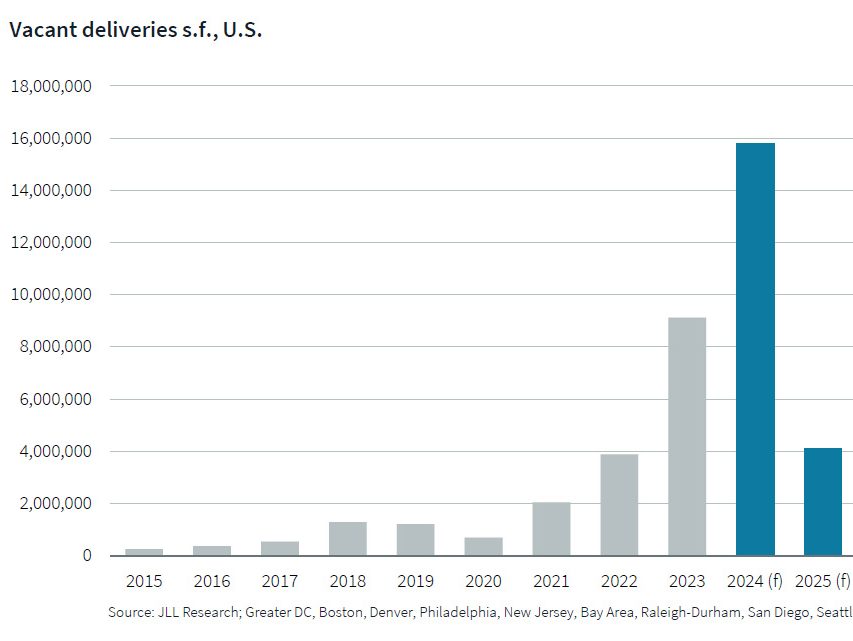QR Code QRiosity
While the technology’s market penetration to date is likely still in single digits, on-site listing signs at all sizes and shapes of commercial spaces now feature odd-looking squares of encoded black-and-white patterns known as “Quick Response” codes. How effective are they? By Brad Berton.
By Brad Berton
In today’s challenging commercial leasing environment, enlightened listing agents are willing to consider nearly any means of quickly and efficiently disseminating information about availabilities. And more and more pioneering pros around the country these days are tapping into an ever-emerging smartphone technology in hopes of generating old-fashioned telephone conversations with prospective tenants or their reps.
While the technology’s market penetration to date is likely still in single digits, on-site listing signs at all sizes and shapes of commercial spaces now feature odd-looking squares of encoded black-and-white patterns known as “Quick Response” codes. Given how easily and cheaply QR codes can be added, allowing passers-by to link smartphones and other mobile devices into extensive details about the listed space, it should be no surprise even moderately technocentric brokers expect the phenomenon to continue burgeoning in coming years.
At this early stage in the use of QR codes for commercial property listing purposes, brokers cannot say with any degree of certainty just how effective the technology is when it comes to filling space. But practitioners seem pretty certain it is helping their causes—or at the very least, it demonstrates technological competence and willingness to experiment with new marketing strategies.
“It shows we’re doing everything possible to up the odds of success, and that’s what it’s all about in this business,” stressed Rob Kurth, principal at the tech-savvy Kursch Group boutique brokerage in the Southern California high desert city of Victorville. Particularly for an outfit like Kursch, where the pros are already quite proficient at using smart mobile devices, QR codes represent one more viable means of sharing data and catching eyeballs of more prospective tenants.
While it is hard to specify just how many contacts QR codes generated, veteran agent Scott Maesel is convinced the technology had a lot to do with the 200-plus inquiries he and associate Wayne Caplan received after posting the codes on street-level listing signs at a high-profile downtown Chicago high-rise.
Maesel, managing director with the local Sperry Van Ness brokerage operation, as of press time had not yet closed a deal for any of the 7,000 square feet of space available at developer Fifield Cos.’ Alta at K Station luxury apartment tower. “But ownership is aware that the QR code strategy raised the profile of the property and (increased) the ability to get people information even if they’re just walking by.”
Maesel is bullish about the technology’s prospects, and in fact is using QR codes on signage for about a dozen Chicagoland listings. But he is also all too aware of its limitations in a society where smartphone usage remains far from universal.
“Yes, it seems like a natural enhancement (to the mix of marketing strategies),” Maesel continued. “But I believe both brokers and owners would utilize it more if somehow it were universally understood.”
In addition, like so many other mobile applications, users have to download QR code readers to their phones and other devices in order to take advantage of the technology. But reader apps cost little if anything, and are pretty simple to download and use. Once a mobile device owner installs a reader, he or she can simply aim the device’s camera at (or near) the code on a listing sign and be linked to the corresponding Web page providing real-time updated data on the subject space and property.
“You can stand in front of the building, snap a picture of the code and get the contact or content you want on the property instantly,” related early-adopting broker Mary Beth Kohart, a principal with Cassidy Turley in Indianapolis. Busy field operatives “don’t have to mess around writing down phone numbers or Web site addresses; you’ll already have them.”
QR codes likewise eliminate the impracticalities of regularly updating the listing information Kursch Group has been providing with its on-site posters, added Kurth. “You can make those changes in real time, and that does save time and effort.”
More important, QR codes make it easier for key people to get information they need and compare it with the competition at their leisure, without needing to take time for a personal conversation, Kurth noted. “And that’s a key to effective brokerage.”
Landlords and brokers also like the fact that tech-savvy prospective tenants and their reps can access property data on something of a “self-service” basis on weekends or at other times agents are not immediately available, added Aaron Ligon, broker-in-charge at multi-service Ligon Commercial Real Estate in Charlotte.
“There is little disputing that this technology can provide great listing exposure and 24-7 marketing,” Kohart agreed.
To make it easier to use the codes, Ligon utilizes the automatic QR code generator and companion URL shortening function available through the Bitly content-linking service. Bitly likewise tracks the number of times prospective tenants or their reps—or pretty much any devices—scan each of the QR codes Ligon has on his various listing signs, offering insight into direct traffic volume.
Ligon has also just begun handing out specialty “property cards” embedded with QR codes for specific properties, which direct prospects to a digital copy of information that would otherwise be printed and hand delivered. Kursch is likewise embedding QR codes on “postcard” type marketing mailings.
One slight complication likely to be ironed out in fairly short order is that some of the various mobile devices in use today work with customized QR code reader apps. However, the codes themselves are universally applicable—although, as Maesel pointed out, some devices recognize them more efficiently than others.
Perhaps the greater challenge is that a lot of working American adults still don’t carry smartphones and/or tablet devices—and many probably never will. But at least corporate and other user-side real estate pros and tenant reps use mobile devices disproportionately to the general population and are more likely to understand what QR codes are all about.
Right now, penetration of QR codes in Chicagoland listings is probably still below 10 percent, Maesel estimated, although usage in the nation’s Heartland does appear to be trailing coastal markets and higher activity in Asia bodes well for the United States, Kohart noted.
She believes it is likely only a matter of time before QR codes evolve into something of a standard practice with listing signage.
Meanwhile, although QR code brokerage pioneers cannot yet credit the technology for a lot of transactions, there are indications it is generating more buzz about listings and also creating clout with clients. Prospective tenants frequently mention Ligon’s use of QR codes, for instance, indicating the strategy is boosting interest in listed spaces (or at least in the marketing materials).
Like some of the other early adopters, Ligon has created customized Web “mini-pages” linked to the QR codes he has posted at certain properties. These pages include basic information on locations, availabilities, pricing—even floor plans. “And some of these pages have been accessed 40 or 50 times,” he noted.
One would-be tenant was particularly intrigued by Ligon’s strategy for using QR codes in the firm’s marketing efforts. “And that sparked interest in a space we ultimately leased to them.”
Landlords also can be impressed, which helps establish professional credibility and helps secure new relationships and listings, Kurth noted. “When we explain how we use QR codes to an owner that hasn’t seen them before, the typical response is not only that it’s cool stuff but also that they can trust that we know what we’re doing.”
Added Kohart: “I can illustrate to my owners we are using all avenues to reach prospects. I believe it illustrates you are aware of and understand how to embrace technology.”
Likewise, Ligon’s impression is that his firm’s willingness to pursue “new and inventive marketing concepts” such as QR codes has been a key factor in winning at least a few agency engagements.
And he would not be surprised if certain landlords themselves start mixing QR codes into their in-house marketing strategies.






